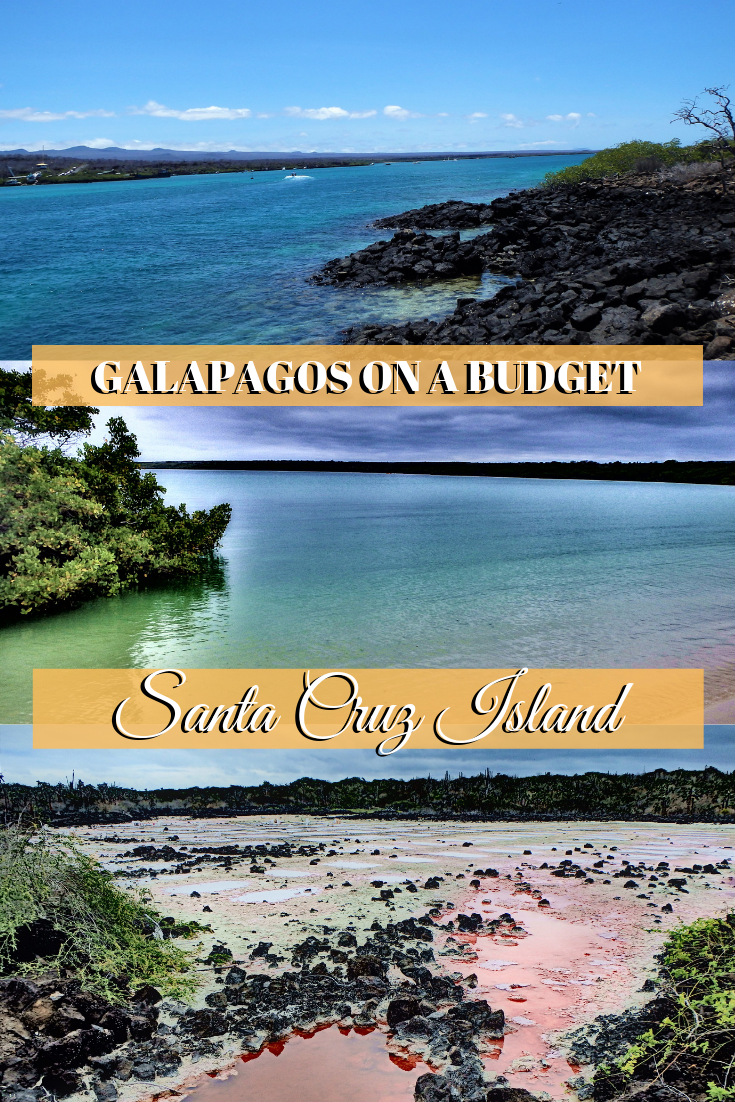Santa Cruz was our third and final destination when exploring the Galapagos Islands.
It truly is the heart of the archipelago, with it’s bustling town of Puerto Ayora being the most populated and developed across the Galapagos. Santa Cruz’s central location between the islands of Isabela and San Cristóbal make it is a huge transport hub.
Almost every visitor to the Galapagos will pass through Santa Cruz along their travels, from budget backpackers to high-class cruise seekers.
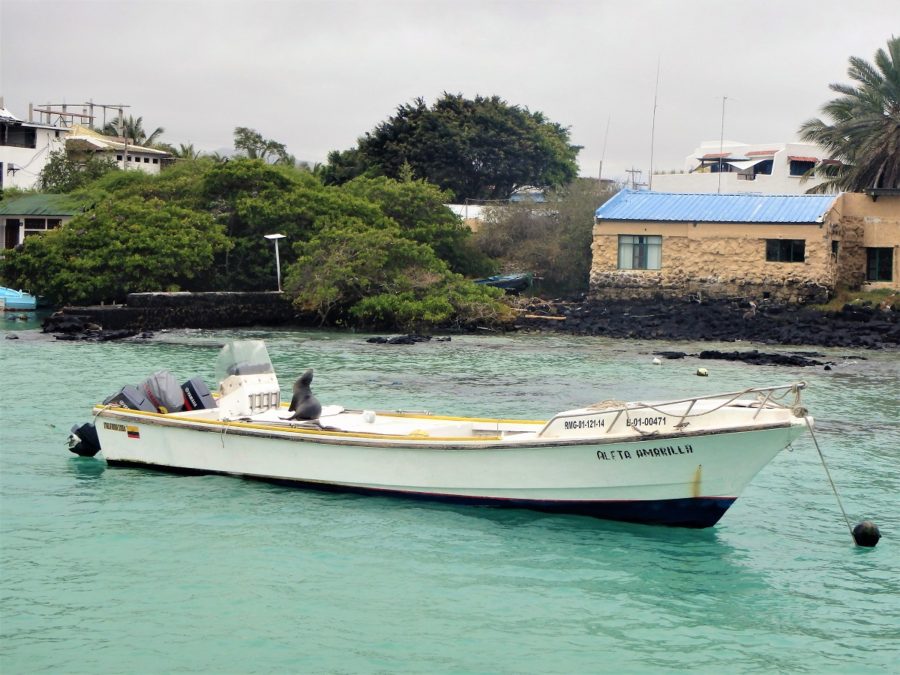
A point to note is that it is possible to get cruises much cheaper on-island versus on Ecuador’s mainland or online. Maybe something to consider for those with flexibility and a little more money. They were still a little too pricey for us.
Luckily we found plenty to do while exploring Santa Cruz independently. Here we share how you too can travel around the Galapagos on a budget!
What to do on Santa Cruz
Visit the Charles Darwin Research Centre
This is an absolute must-visit in Santa Cruz!
Both Isabela and San Cristobal have their own tortoise centres but the Charles Darwin Research Centre is the original and largest. It serves as a great introduction to the island, and whole archipelago if newly arrived.
This facility has served as a research base for scientists studying the archipelago’s marine and terrestrial habitats since 1964. The work here is integral to ensure the conservation and sustainable management of the islands’ fragile local ecosystem.
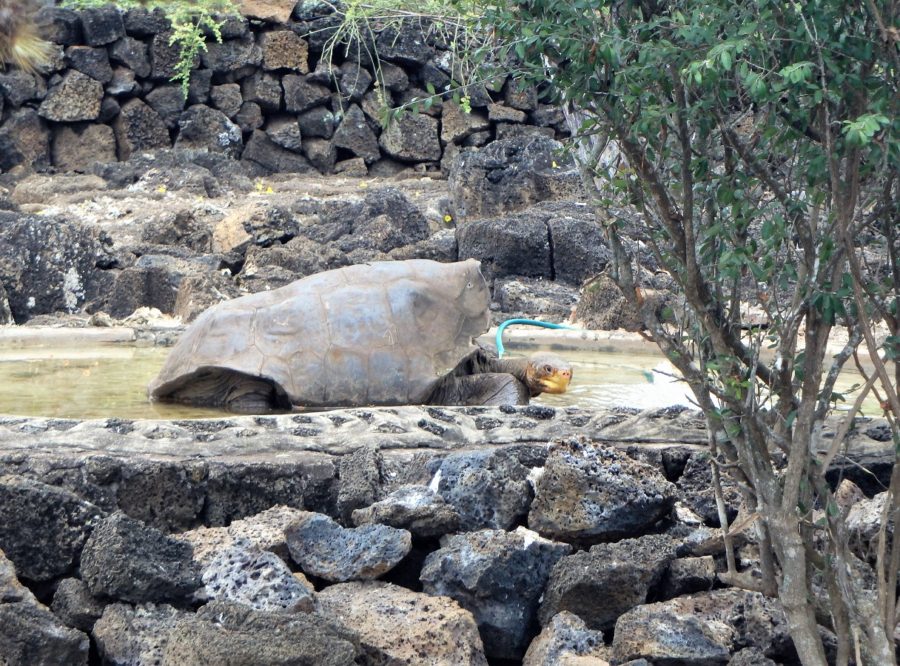
We found the centre super informative. There are tons of information boards which also include details or their tortoise and iguana breading projects.
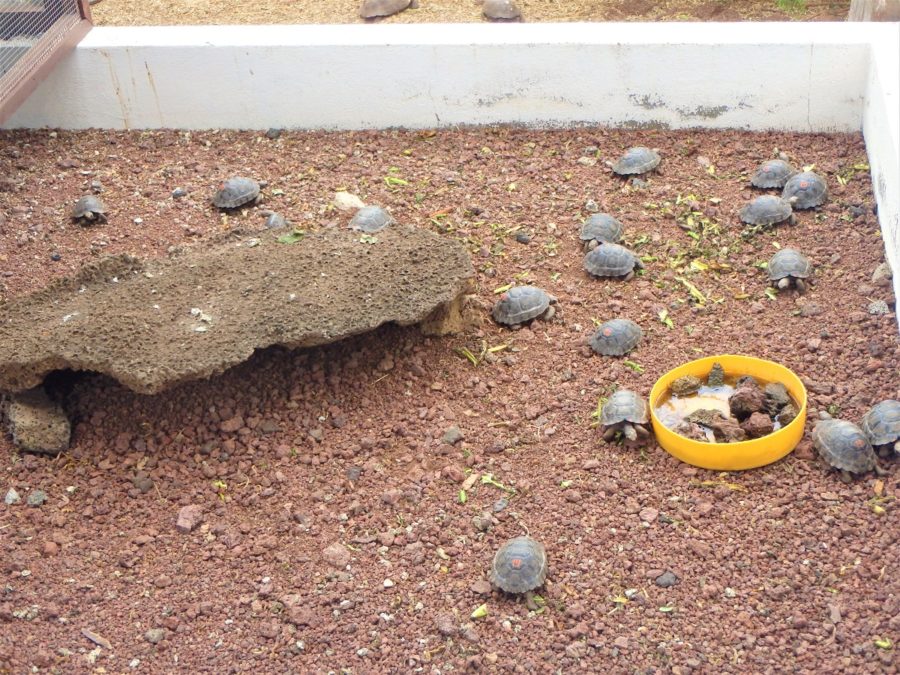
Within the research centre is a specialised area where they give tours to view the taxidermy of Lonesome George. This relatively famous tortoise was the last known individual of the Pinta Island Giant Tortoises who sadly passed away in 2012.
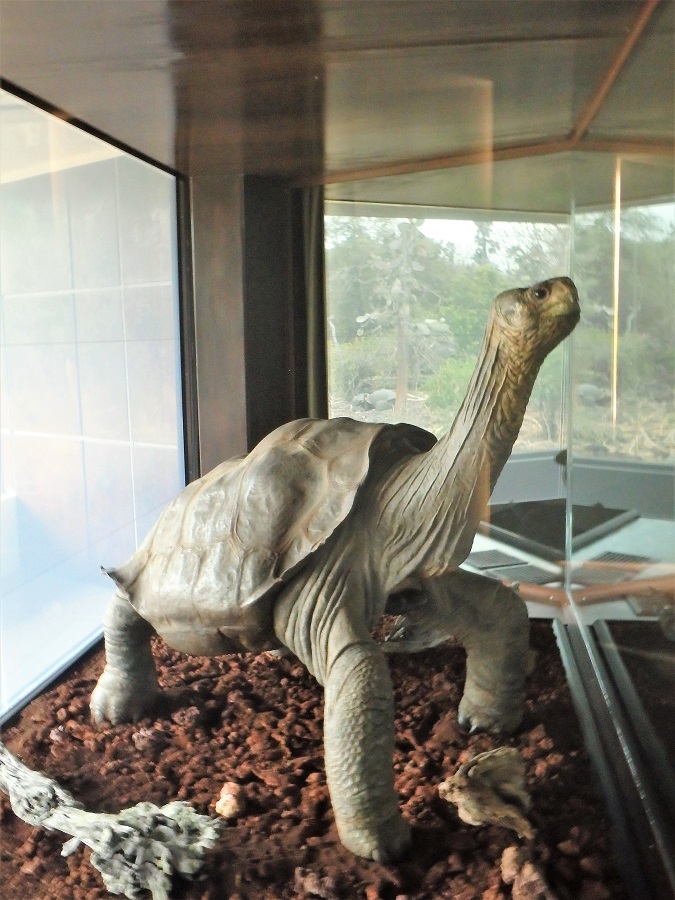
Wondering about the fee to check out this awesome place? It costs absolutely nothing.
Snorkel Las Grietas
A popular spot for locals and travellers alike, probably because this is also free!
Las Grietas (‘The Cracks’) is very unique in Galapagos. Named so for the imposing crevice formed by the splitting of these cliffs, the crystal clear waters here are idyllic for a refreshing swim.
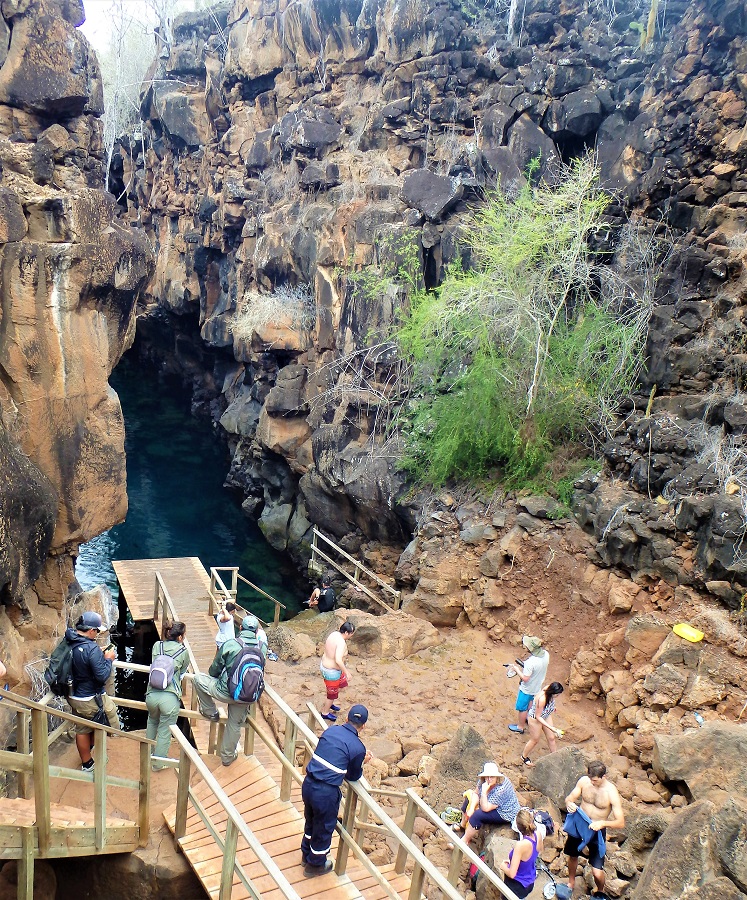
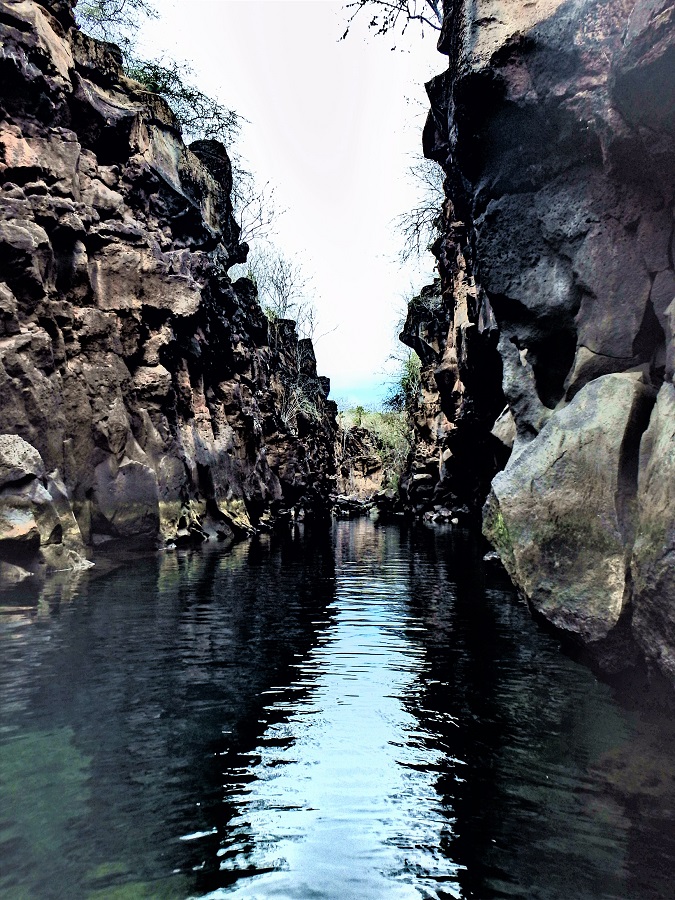
Water apparently feeds into these isolated lagoons from the ocean and through the porous rock from the highlands making it brackish. It therefore only supports a limited amount of underwater life.
Snorkelling across we spotted a few larger schooling fish and the odd marine iguana passing through.
With the clear visibility, the structure of this crevasse is just as impressive below the surface as it is above. It is also great fun for free diving with the sandy bottom around 30ft deep.
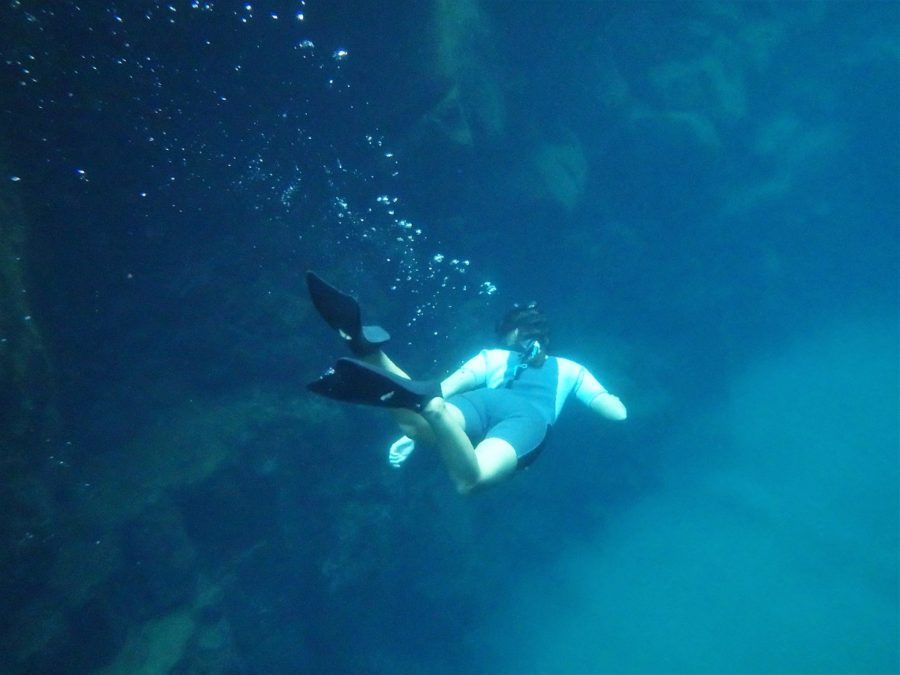
So while there is no cost for visiting Las Grietas, travellers will need to pay $2 USD each for a one-way water taxi ride across the harbour. Request the taxi drop you at Angermeyer Point.
From here it is an easy 20 minute walk to the lagoon.
The walk itself included a couple of surprises, one of which was a salt marsh where we discovered the locals actually harvest their own salt!
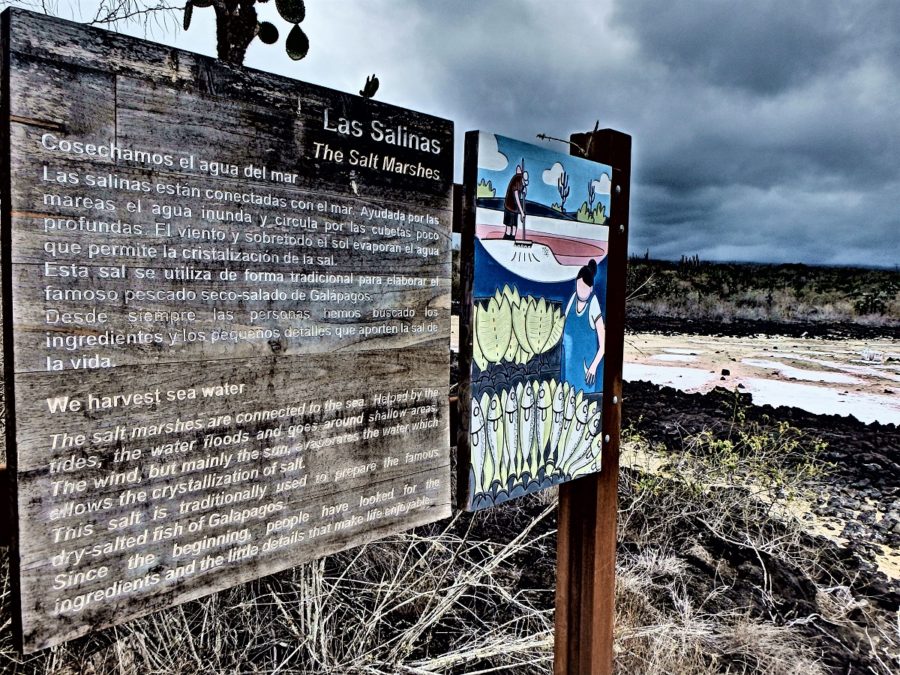
Tip: While the water here was marginally warmer than the ocean and Las Grietas was sheltered from the wind, we would still recommend renting wetsuits in town.
Relax at Tortuga Bay
Commonly referred to as the most beautiful beach in the Galapagos, Santa Cruz’s not-so-hidden gem is totally worth the 2.5km walk to get there.
Note: The trail to Tortuga Bay is only open from 6am – 6pm so be sure to factor this timing in when making a trip there.
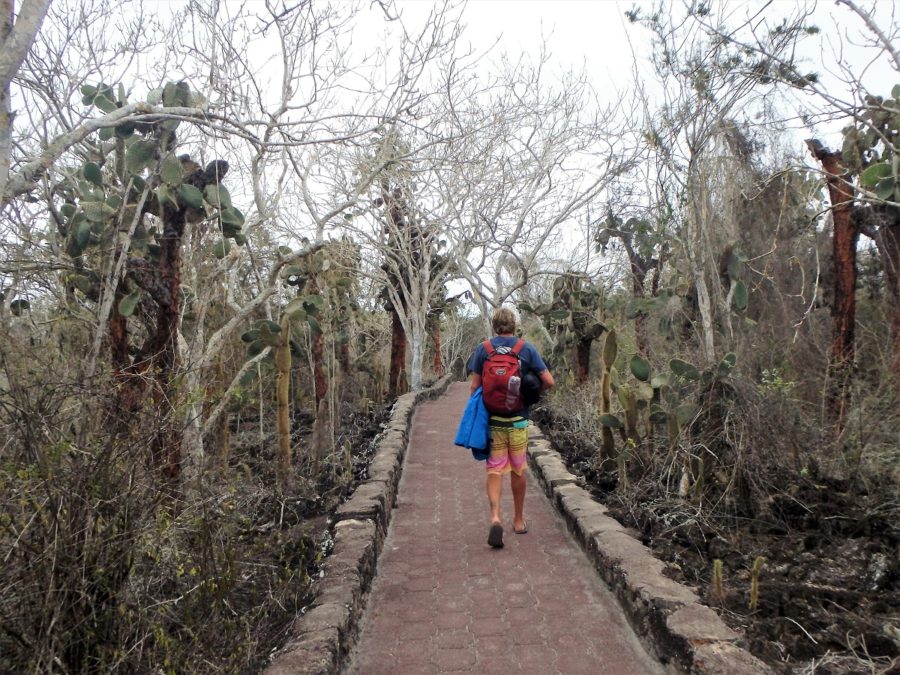
A paved pathway forms the first half of the journey down from town, down to the shores of Playa Brava.
While Playa Brava is a beautiful beach itself, it is not the most ‘tourist-attractive’ due to prevailing winds and rough swells that crash onto the shore. Due to the dangers, swimming here is prohibited however surfing is not (for those looking to be more active).
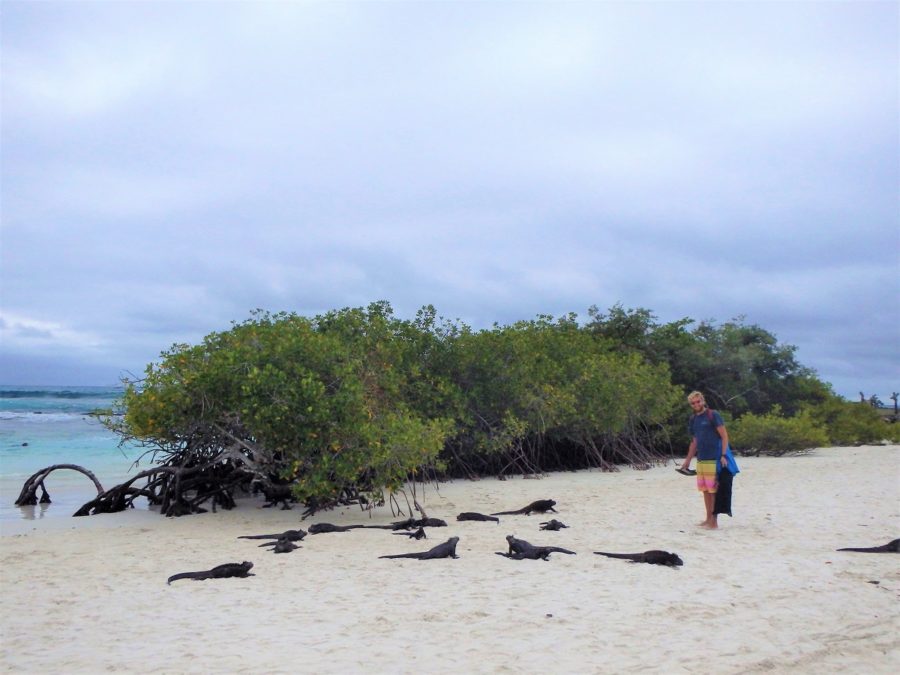
It’s a breezy stroll along the sand before travellers finally reach the calm and sheltered shores of Tortuga Bay.
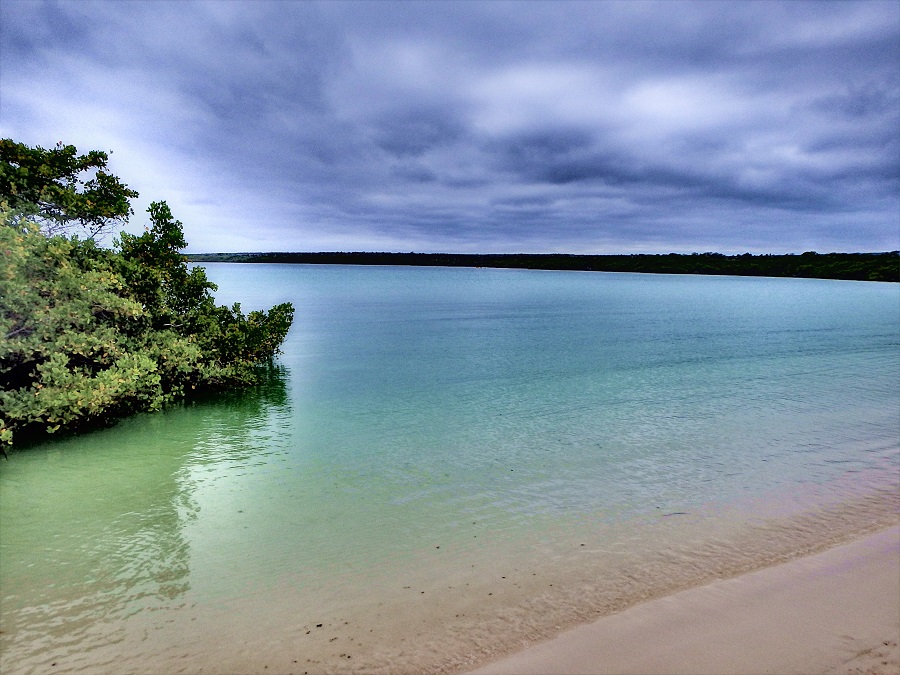
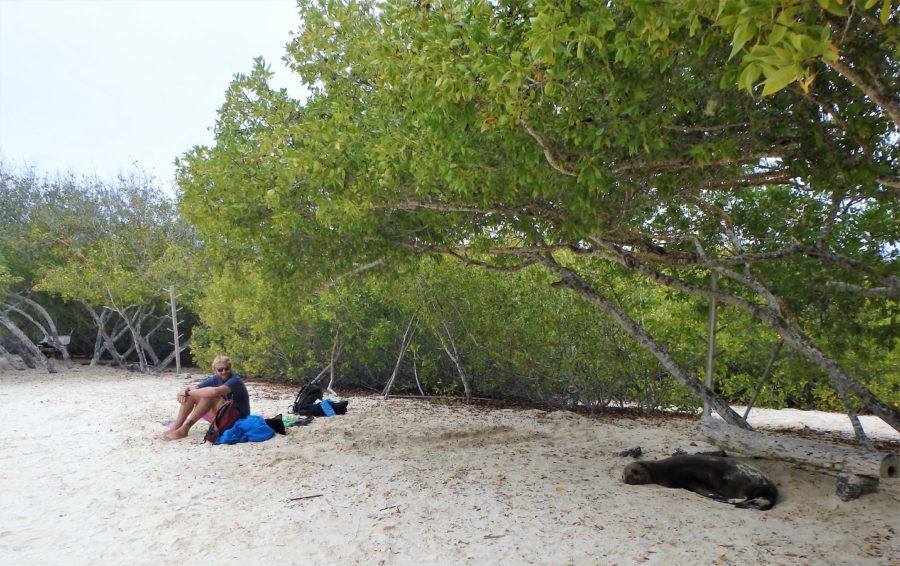
We brought a picnic along with us which attracted some comical but unwanted visitors.
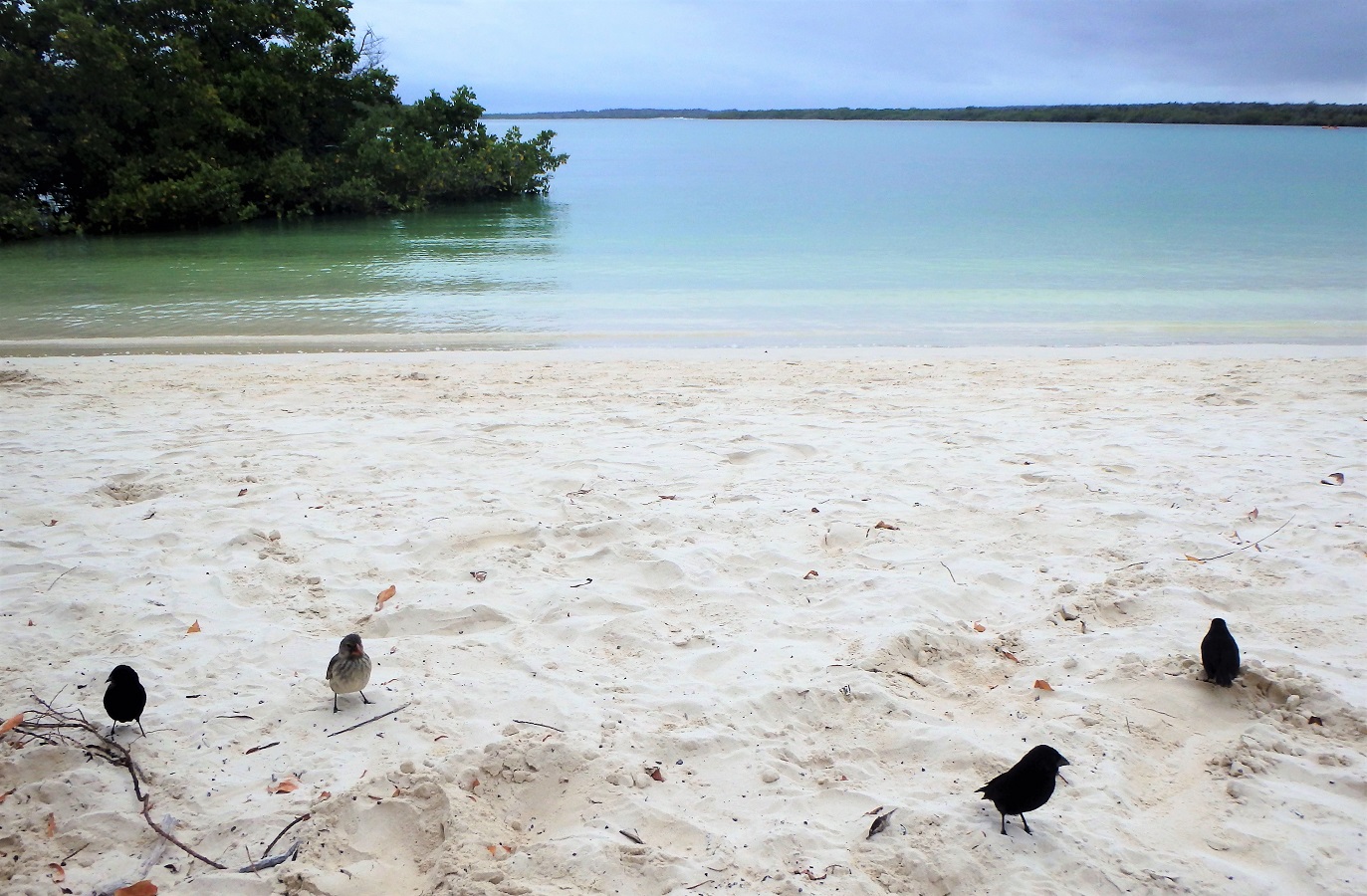
While it should already be a given, do not feed the wildlife. They have park rangers on site to enforce this but they’re not always effective. Plus those finches are daring little things!
Unfortunately the rangers did come down on us for bringing a bottle of bubbly. We had thought it would be a fun way to celebrate our anniversary and were diligent to check every ‘prohibited item’ sign on route to the beach. We thought we were in the clear!
I guess ‘sin alcohol‘ is so obvious they don’t have to post it… Oh well, now we (and you) know!
Laguna de Las Ninfas
Perfect for a little post-lunch stroll. This short boardwalk takes visitors through the mangroves to explore more of the local habitat.
Informational boards along the route give details on the local flora and indicate some of the wildlife that can be spotted. Apparently juvenille sharks, rays and turtles all seek shelter in these waters.
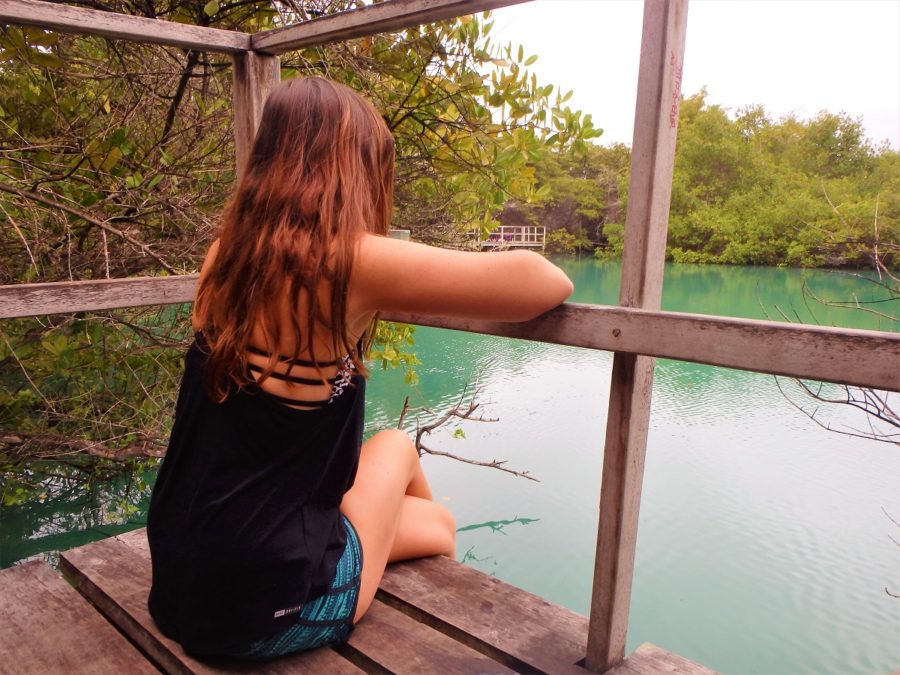
While we unfortunately didn’t spot any of the aforementioned marine life, we enjoyed the peaceful walk. And it’s yet another sight that costs budget travellers nothing.
Dive Gordon Rocks
The first one on the list so far that this not free but is worth the expense for experienced divers.
Gordon Rocks is a world-renowned dive site and one of the most popular in the whole of Galapagos. The main reason divers seek this spot, is for the sharks. Hammerheads, in particular.
To dive Gordon Rocks you need to be a certified diver, at least to Advanced Open Water.
Nicknamed ‘the washing machine’, this dive site is known for it’s strong currents and challenging conditions.
Enticed by the prospect of sharks Rhys set off with a local dive operator. Despite it being super unlikely they would not see a shark, poor Rhys managed it (it’s like he is a natural shark repellent!).
It was hardly a let-down though as he instead encountered two huge sunfish!
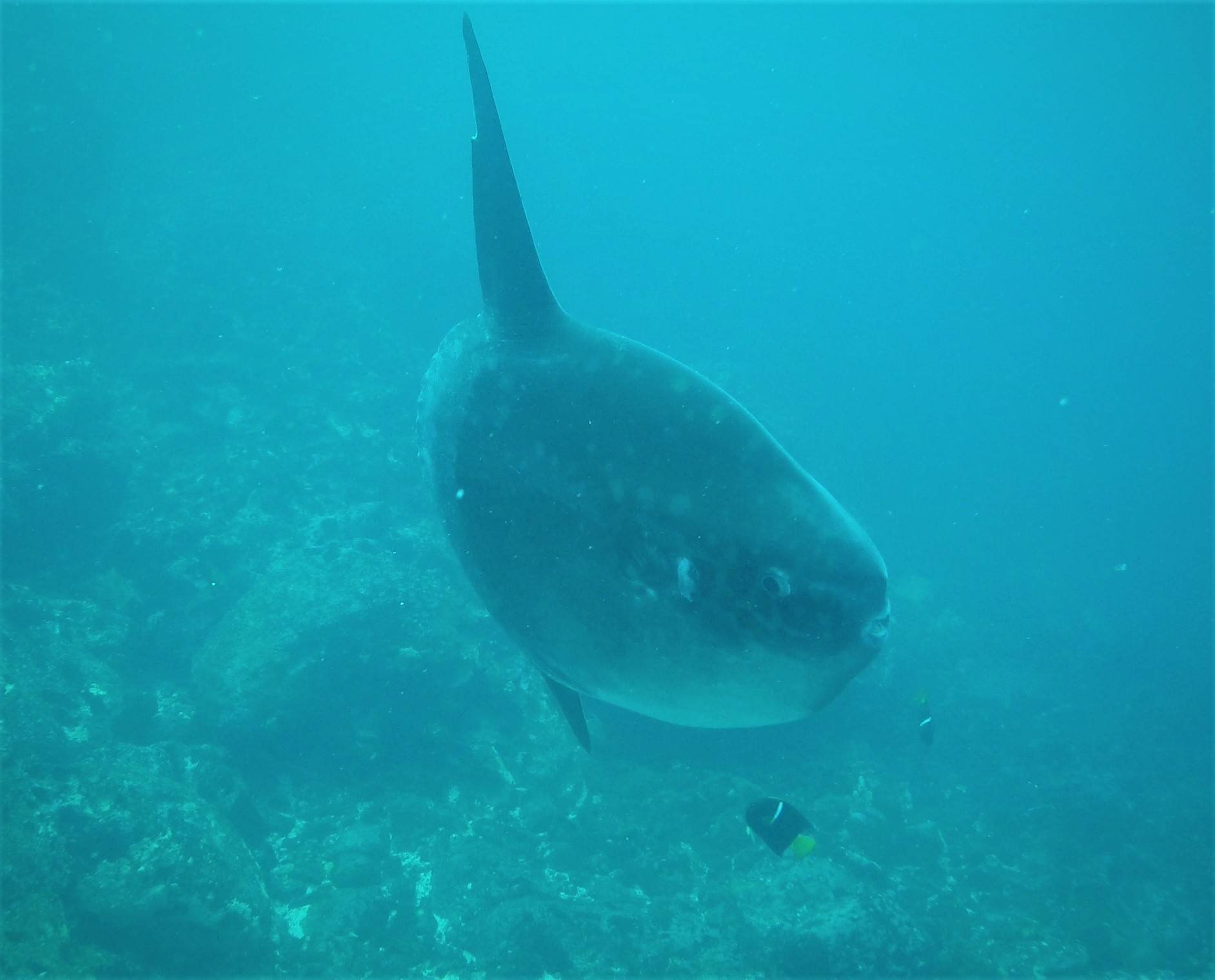
A new tick off the bucket list, these sunfish more than made up for the absence of sharks. At least we had already got to see hammerheads off Kicker Rock on San Cristóbal island anyway.
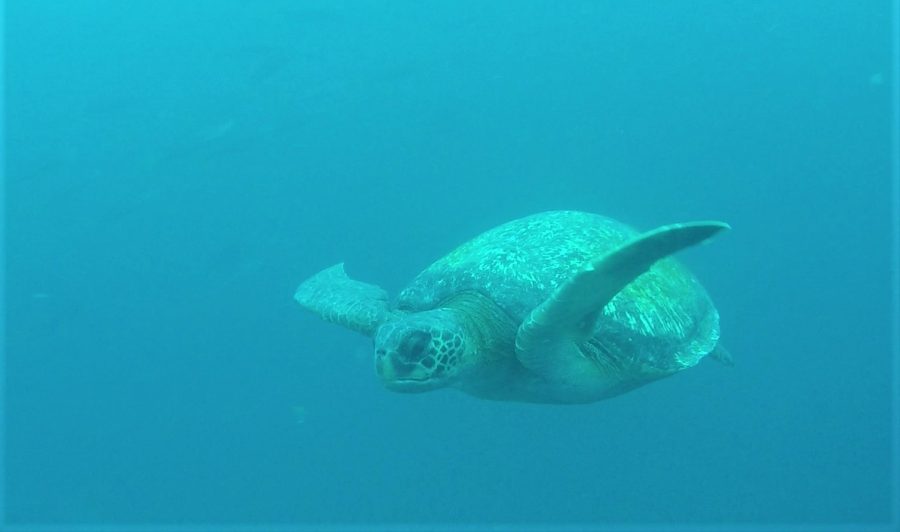
Check out the local fish market
Puerto Ayroa’s muelle del pescador (fish market) is a hot spot for both locals and tourists.
Locals frequent this market to buy an array of fresh seafood while visitors to the island come to watch the gathering wildlife: dozens of pelicans, herons and frigates perched above and around the market just waiting for an opportunity to steal a scrap.
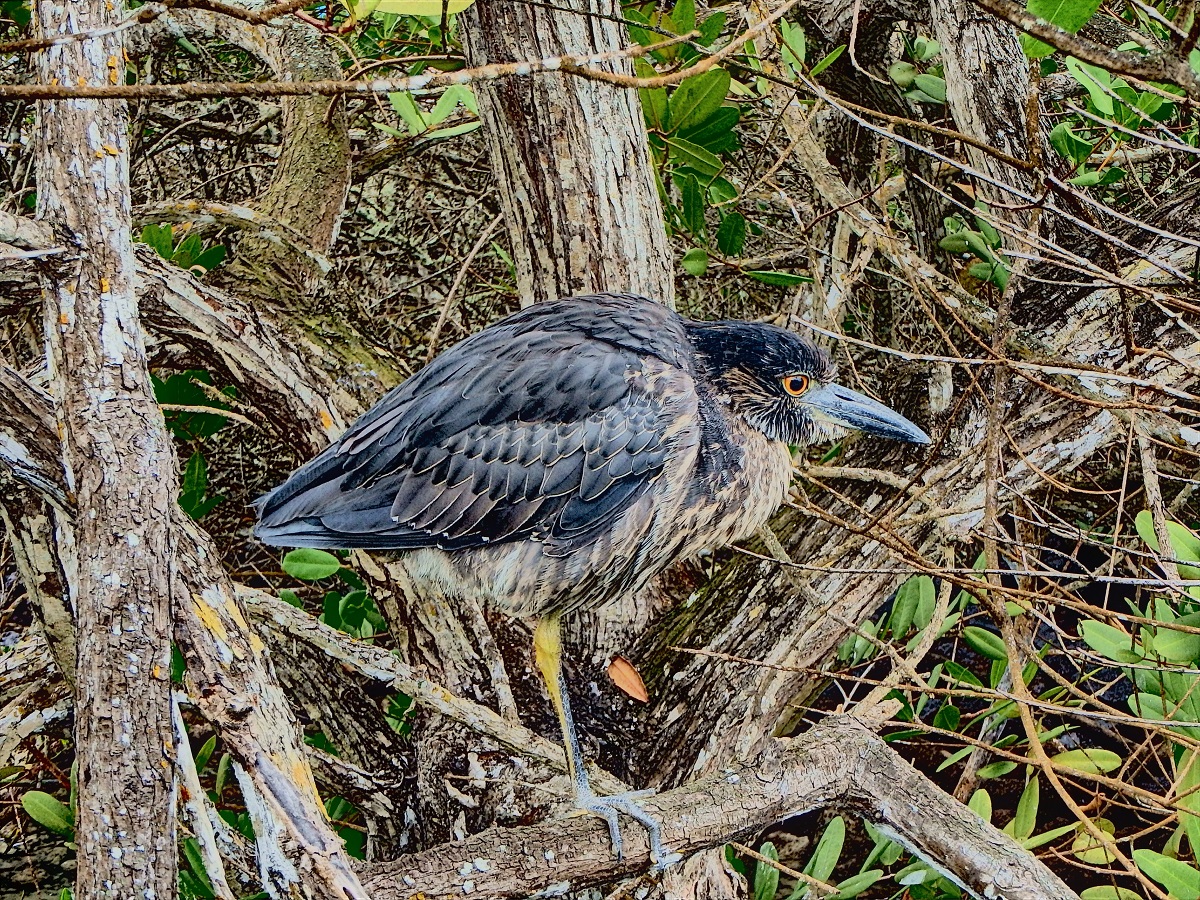
One such resident doesn’t need to steal to bag his fill of fish…
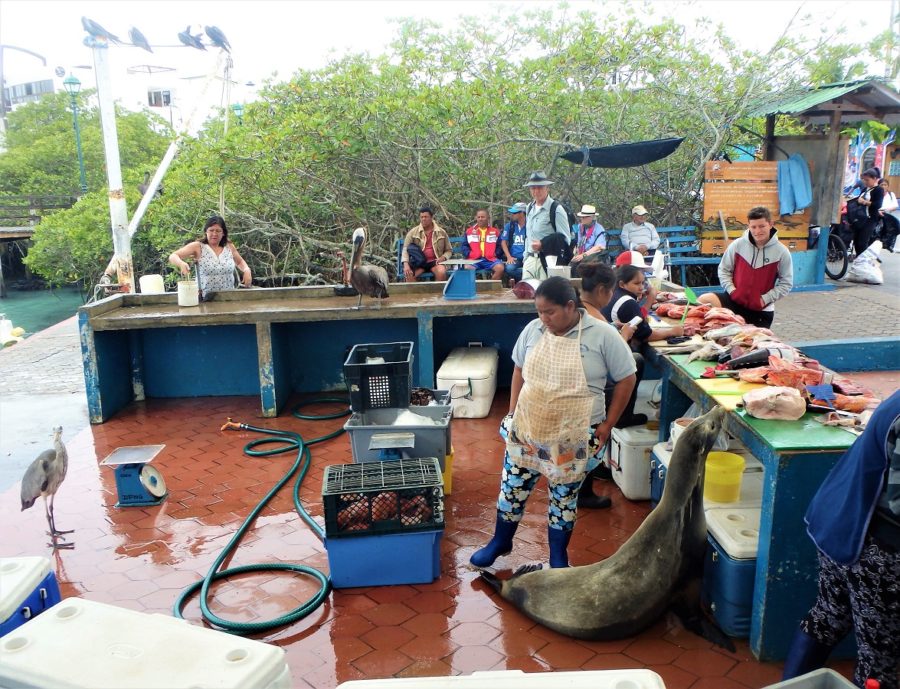
This confident sea lion appears to be a regular visitor to the local fish market and definitely draws in the crowds. I guess it has learned that this way is better than stealing to get a good feed.
Seeing their amazing display of fish I actually decided to buy one myself. I was pretty proud of myself as the vendors spoke zero English.
While I managed to physically buy the fish, the language barrier did meant I had no idea what fish it actually was and I accidentally relayed for the lady not to scale, fin and de-head it. Whoops! That made for a fun task back at the hostel.
I would still deem my mission a success. It was a budget-friendly dinner costing less than $5 and it was pretty delicious, especially served alongside some Spanish-style rice and patacones (fried plantain). Perfection!
Tip: As with any market, if you want a good selection of fresh seafood – go early. Plus it’s more fun when there’s more hustle and bustle.
Eat Fresh Local Lobster
Keeping on the seafood train we have to share another of our favourite discoveries in Puerto Ayora: Los Kioskos. It’s kind of like the street-food-extravaganza of the Galapagos Islands!
During the day, this street is very unimposing. It’s a quiet road that leads between an abundance of small restaurants.
Dinner time, it all changes and is when you want to come.
The street closes to vehicles and every vendor spills out from the sidewalk, extending their restaurants to cater for the hundreds of locals that dine here. And when the locals go, you know it’s got to be good!
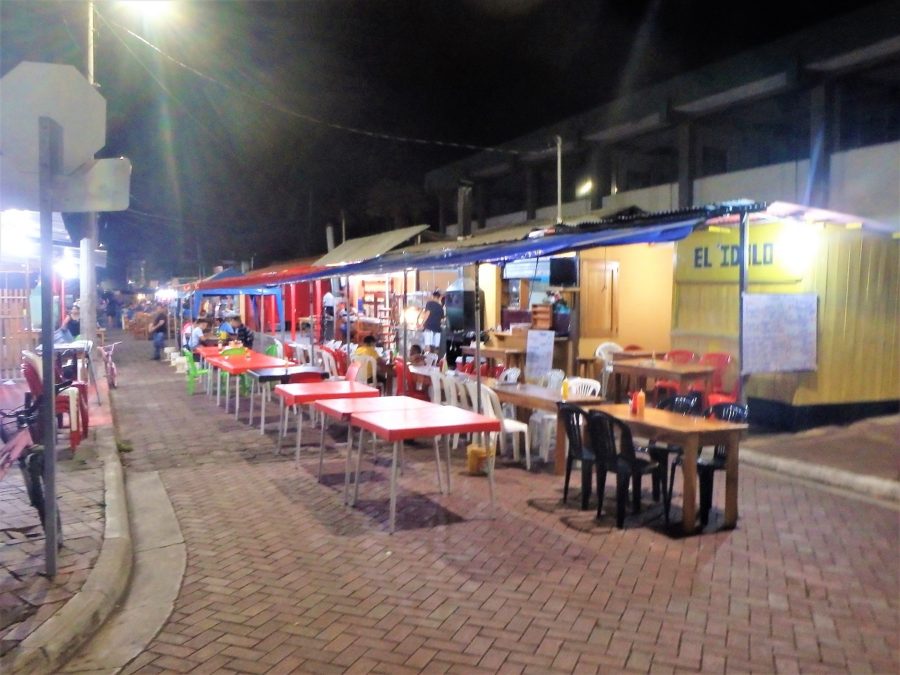
Almost everything on offer here is seafood, freshly caught and purchased from the market that morning. We were recommend by several locals to go for the lobster. Why would we ignore such good advice?!
The best part is, that at $10 a lobster, even budget backpackers like us can afford it!

It was divine!
Thanks to the advice of our server we had our lobster four different ways: one half plain grilled, another with garlic butter, and other with a creamy coconut sauce and the last ‘con mariscos‘, meaning it was topped with an array of additionally grilled seafood across the top.
For us, this was the epitome of Galapagos dining. Fresh, local, delicious produce and an incredible atmosphere.
More Eating & Drinking…
While we typically enjoy doing most of our own cooking, we always aim to check out a few local bars and restaurants. Here are a couple more we enjoyed in Puerto Ayora.
For said happy hour, we definitely recommend Zayapa Bar-Restaurante where they had the most delicious passion fruit and blackberry daiquiris.
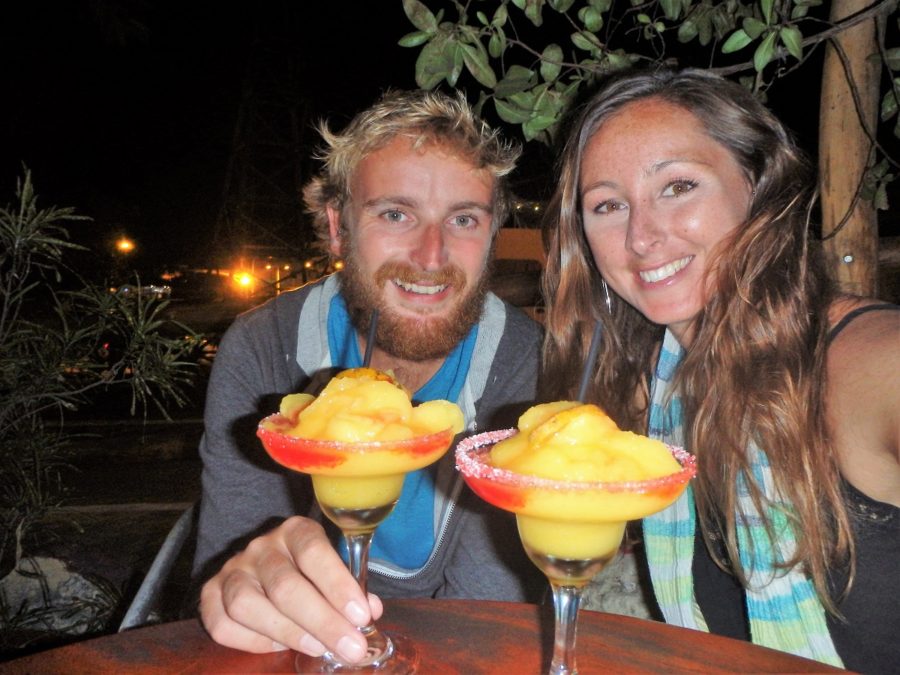
We also stopped by Rincón del Alma where they served decent mojitos. The owner was also very charming as he casually made his acquaintance with patrons around the restaurant. Even more incredibly, despite living in Galapagos his entire life we were shocked to learn he had been to Tenby in Wales!
For those looking for something quick and easy, we also liked Galapagos Planet. It’s main draw is that it’s a sushi bar but they do good breakfast and soups, which are more budget-friendly.
Where to stay on Santa Cruz
If you’ve read our Galapagos on a Budget blogs of San Cristóbal and Isabela islands, then you may already be familiar with the fact that Hostelworld is of little help here. Booking.com however proved fairly fruitful.
Our plan had been to shop around on the island but once we browsed online it seemed much easier. I mean, you get pictures, costs and reviews.
So we decided to go with Hostal Crossman, a quaint family-run hostel just a five minute walk from the harbour.
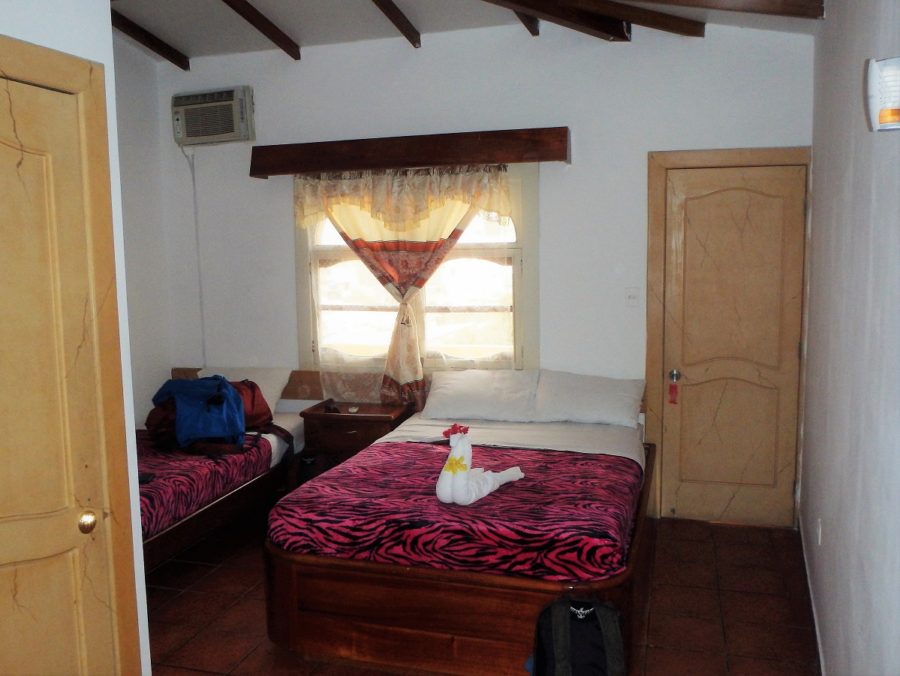
It cost us just $145 USD between us for five nights ($29 per night). This got us a top-floor private room with ensuite and even a balcony looking out over town! We couldn’t believe our luck.

The family that ran the hostel spoke little to no English but were super lovely when we tried to communicate when crossing paths in the small kitchen.
The only part that was a little strange was not to do with the hostel but the school across the road… On two separate mornings we were woken by music blaring from the yard. It was as if the school was having morning raves! It was comical rather than a annoyance to be fair.
How to get to Santa Cruz
The majority of travellers will make their way to Santa Cruz island via plane. No international flights arrive here but there are daily flights from Quito and Guayaquil on Ecuador’s mainland.
Santa Cruz’s airport is actually located on another island (Isla Baltra) to it’s north. To reach Puerto Ayora, visitors will need to travel five minutes by bus (free), five minutes by boat ($1 each) and 30 minutes by taxi (~$20 total).
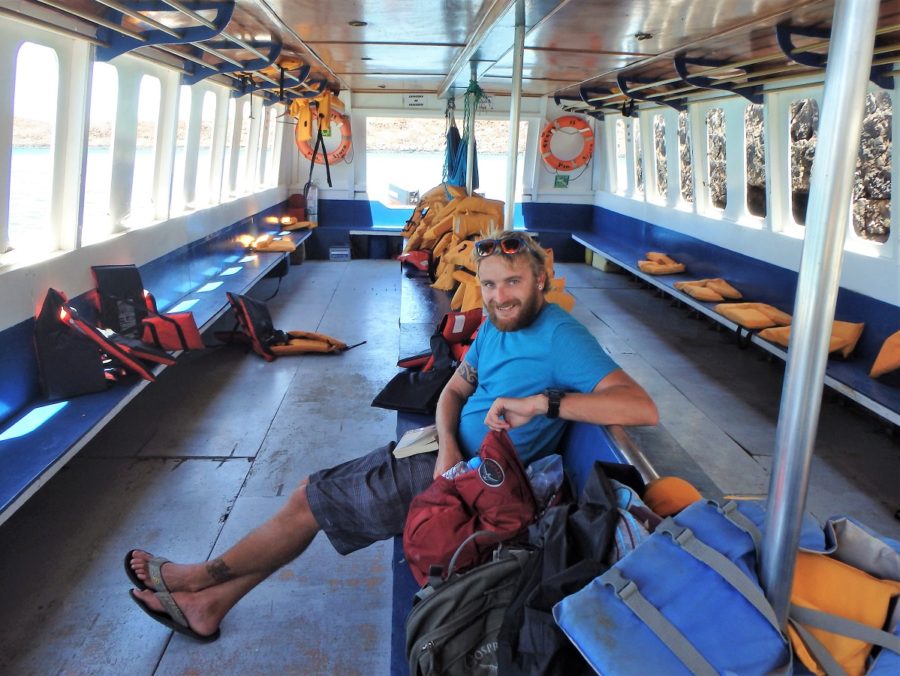
We only flew out from Santa Cruz having arrived instead on San Cristóbal island. Our return flights to Quito cost $775 USD between us.
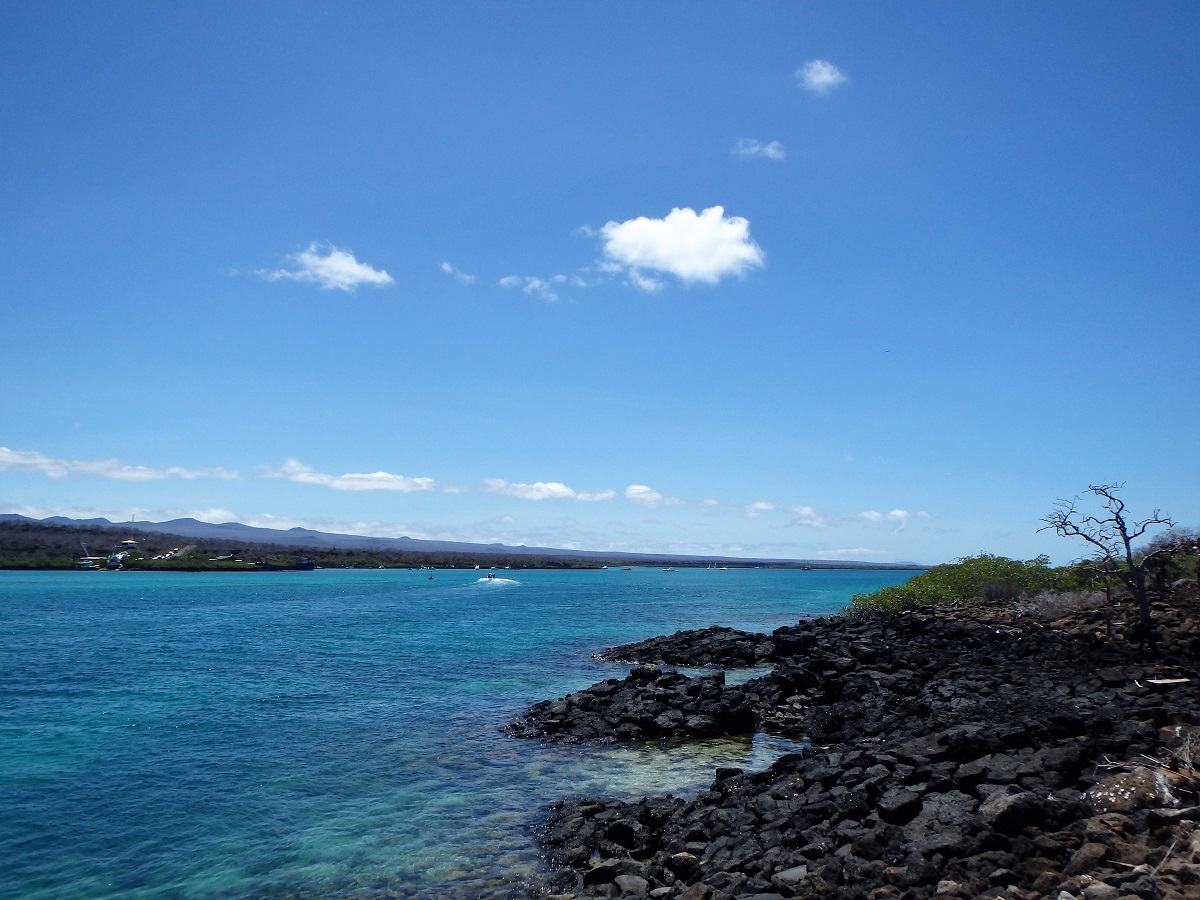
For those looking to island-hop on a budget, we would recommend a similar strategy of flying in one island and out the other. It saves time and a ferry ride (ergo, cheaper!).
If this itinerary is not possible then there are daily ferries direct to Puerto Ayora from Puerto Baquerizo Moreno in San Cristóbal. The journey takes 2 hours and is $25 per person; the daily schedule can be found here.
To sum it up
After visiting the three islands, we were genuinely surprised by just how much could be done in the Galapagos on a budget!
Independently exploring and simply snorkelling from shore allowed us to see some incredible wildlife on the cheap, if not for free!
It’s mostly the cost to physically get to the islands that puts so many budget travellers off. I mean $500+ USD (flights, visas, entrance fees) straight off the cuff is daunting.
All we can suggest is that if you plan on travelling to Ecuador in South America, do your research and do everything in your power to make a trip here happen. It will be a lifetime experience that you won’t regret. Happy travels!
Like this blog? Pin it!
